Head of Azov Regiment Patronage Service: bodies of soldiers handed over by Russians so damaged that it's impossible to collect DNA

Until 2014, Olena Tolkachova had been living a normal life, working as a legal consultant and managing her own events planning agency.
But everything in her life drastically changed after the Euromaidan [Ukraine’s Revolution of Dignity, 2013-2014). Olena became the Head of the Azov Regiment Patronage Service [a support service for the soldiers of the Azov Regiment and their families -ed.].
At the moment, Tolkachova is leading a team who are tasked with burying the Azov soldiers killed in the war, assist in the rehabilitation of injured soldiers, and support their families.
In an interview with Ukrainska Pravda, the Head of the Azov Regiment Patronage Service describes the search for fallen warriors; she reveals the state in which Russians hand over the bodies of the Ukrainians who were killed; how they exchange bodies; why Russians are not handing over the bodies of Azov soldiers killed in a POW camp in Olenivka; and she harshly criticises international organisations for their inactivity.
"We get the fallen soldiers in such a state that it is very hard to recognise a person"
– Please, tell us: what does the Azov Regiment Patronage Service do?
– Starting in 2014, at the very beginning of the war, the Azov Battalion was formed, and we joined together with friends from the Darnytsia district [a district of Kyiv - ed.], who had been on Maidan Square [during the Revolution of Dignity -ed.].
In the beginning, we helped everyone with everything we could. We had cars, we transported humanitarian aid, took young men to their physicals at the military medical board, and got them everything they needed, from forks to some expensive equipment.
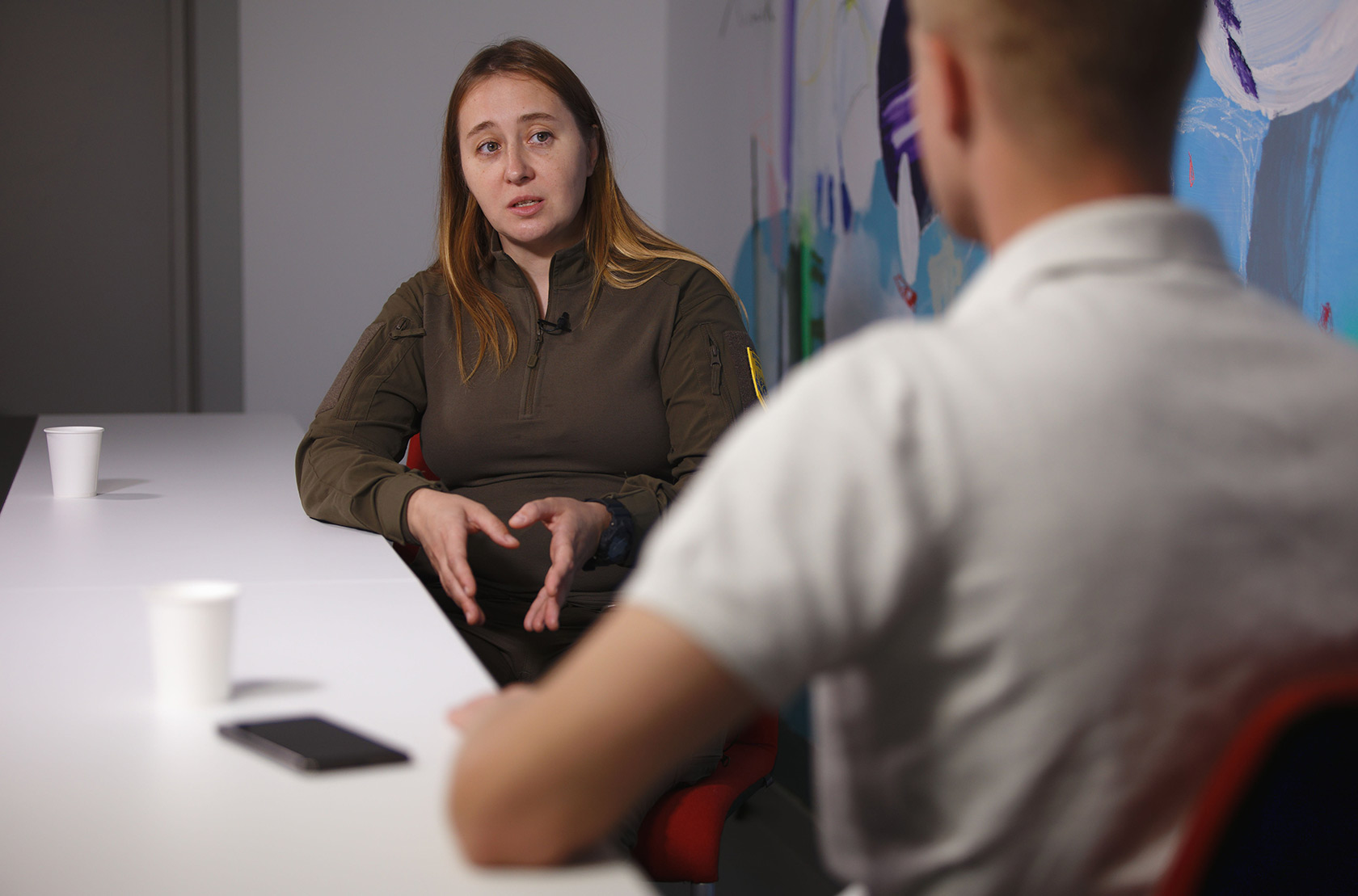
And when Mariupol was liberated in 2014, the first injured soldiers appeared, and we needed someone to manage that problem. The Patronage Service started handling it. We are responsible for helping the injured and ensuring the dead are given a decent burial; we have to do everything to ensure the injured get the care they need, observe how they are feeling, whether they have enough medicines and attention.
Our service was formed spontaneously, in a sense. At first, it was just a few women, then other women started to come to our mobilisation centre and signed up as volunteers. I personally started to help organise funerals and prepare all documents. I have a legal education, and I know how important it is to have all the documents in order.
We are currently assisting with evacuating bodies from frontline morgues, bringing the coffins to the site of the funeral or cremation, organising honour guards, issuing death certificates, and so on.
We are different from our enemy b*stards in this regard as well, judging by how we treat our fallen soldiers. When we started exchanging the bodies of soldiers who had been killed, we saw how the Russians treated their bodies…
– The bodies of their soldiers, not ours?
– Not ours. I cannot even imagine what they would allow themselves to do with the bodies of our soldiers when we don’t see it.
Just so that you understand, we receive the dead bodies in such a state now that it is very hard to recognise a person - no more tattoos are visible, the stage of decomposition is awful.
Our General Staff is responsible for searching for the bodies of killed soldiers. There is a special service at the General Staff for the evacuation of the deceased, known as ‘Na shchyti’ [meaning ‘On the shield’ - ed.]. They used to be called ‘Evacuation of 200’ [200 is military code for dead soldiers -ed.]. They are the ones responsible for this extremely difficult work.
We work with that service when the fallen are taken to morgues. First, we help to identify them.
Because my team and I have been working since 2014, we know a lot of people personally, and therefore we can often recognise them by their tattoos, for example.
But this is only the first examination and registration. Next, there is a direct identification by means of forensic examination or a DNA test, or by some special features. After that, relatives are called, and they sign the identification protocol, in which they agree that this is their relative or they are waiting for the results of the DNA.
I know that the parents, who still cannot wait to see their children, even deceased, are very worried and think that everybody has forgotten them, that no one is looking after their return and burial. It’s not true.
The state takes this matter very seriously. The General Staff and its ‘Na shchyti’ service are working without days off 24/7. They are constantly collecting the soldiers who have been killed, forming the "exchange fund" [for one-to-one exchanges of the dead between the two sides - ed.] to bring back as many of our guys as possible.
They are doing difficult and dangerous work; they have to go not just to a grey zone but right to the frontline, and exchange the bodies there.
And then, when they come to Kyiv, our service helps them, because the scope of their tasks is enormous.
For example, I’ll tell you about one case. After the guys left the Azovstal steelworks [where defenders of Mariupol were barricaded for more than a month in April-May 2022 while the city was under Russian siege - ed.], we started to receive bodies of dead soldiers. If I’m not mistaken, there were 122 bodies, and we needed to register them quickly and keep them in appropriate conditions. We did this literally in one day, working with the National Police, forensic examiners, and the General Staff.
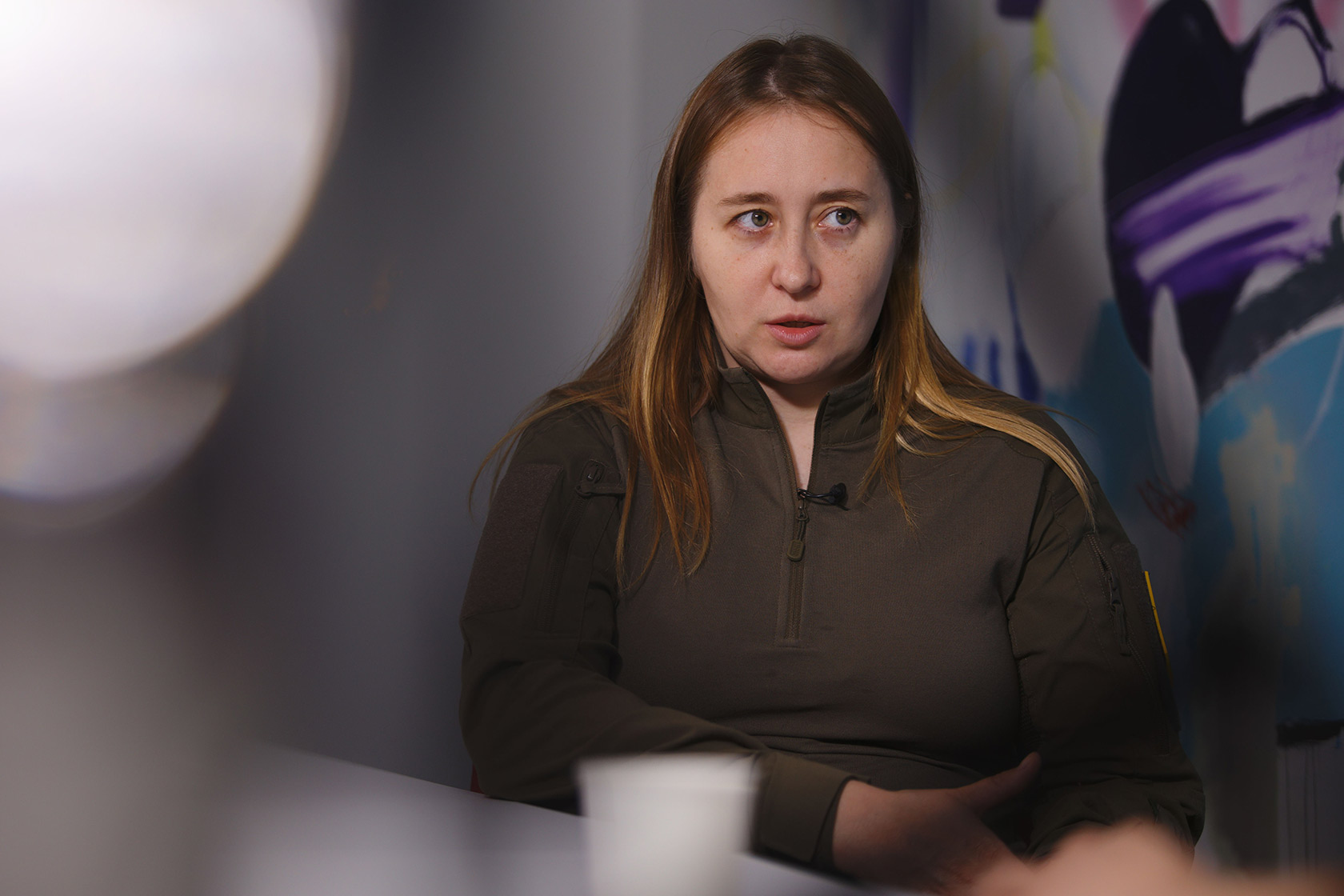
– We’ll have a separate section devoted to Azovstal… You have spoken in detail about searching for our fallen soldiers. Who is responsible for searching for deceased Russians, in order to exchange them in due course?
– It’s also the ‘Na shchyti’ team (of the General Staff of Ukraine). There are search crews that go to very dangerous places to collect bodies. Sometimes they go to the frontline.
At first, they worked mostly in Kyiv Oblast. How do they go about it? First, mines are cleared, and then they go and collect the corpses or remains, and everything is registered.
And, what is most surprising for me, we keep all the bodies of dead Russians in the conditions needed for preservation. This requires a very low temperature, -22°C or -32°C. They are all stored in special railway cars and kept at a steady temperature and so they are not decomposing.
And we hand them over like that, so they can be identified.
– How do the Russians work, then?
– Russians just hand over remains to us - they are so damaged and in such a state of decomposition that sometimes there is nothing even to take a DNA sample from.
We turned to the Max Planck Society in Germany, which has very extensive experience working with DNA. They have special equipment, and they have been ready to come and help us. We are currently conducting negotiations with them, because the procedure used needs to comply with our legislation in order to avoid any difficulties, since the DNA experts must be certified by Ukraine.
At the moment, the identification process is slow, given the large number of deceased soldiers, because a lot of them are coming in simultaneously.
The process does not follow the order of the queue, but as follows: the more decomposed the material is, the more difficult it is, the sooner it is examined. There are certain reagents that are used first, followed by other ones.
Sometimes mothers ask, for example: "Why is it that even though my son has already been identified and came in at the beginning of June, I still do not have the DNA match? And his brother in arms, who was brought in two weeks ago, has already received the DNA match?"
Here, there are no queues, we just follow the process outlined in the protocol.
– How does the exchange of bodies work? What is the procedure?
– As members from the General Staff tell us, two large trucks come in within an hour, or smaller cars if the number of bodies is below 20.
They pull up, park next to each other and exchange the bodies very fast on gurneys, just like that. They go over an acceptance-transfer document, crossing out the soldiers’ numbers as they hand them over. The bodies are marked with numbers, without surnames or any other identification.
It sometimes happens that a soldier is listed by name. For example, if an injured Ukrainian soldier dies in hospital and the staff there know who he is, then sometimes they record the name. But this is quite rare; mostly we just get their identification number.
When they are exchanging bodies, the firing stops, they exchange the bodies quickly and then drive away.
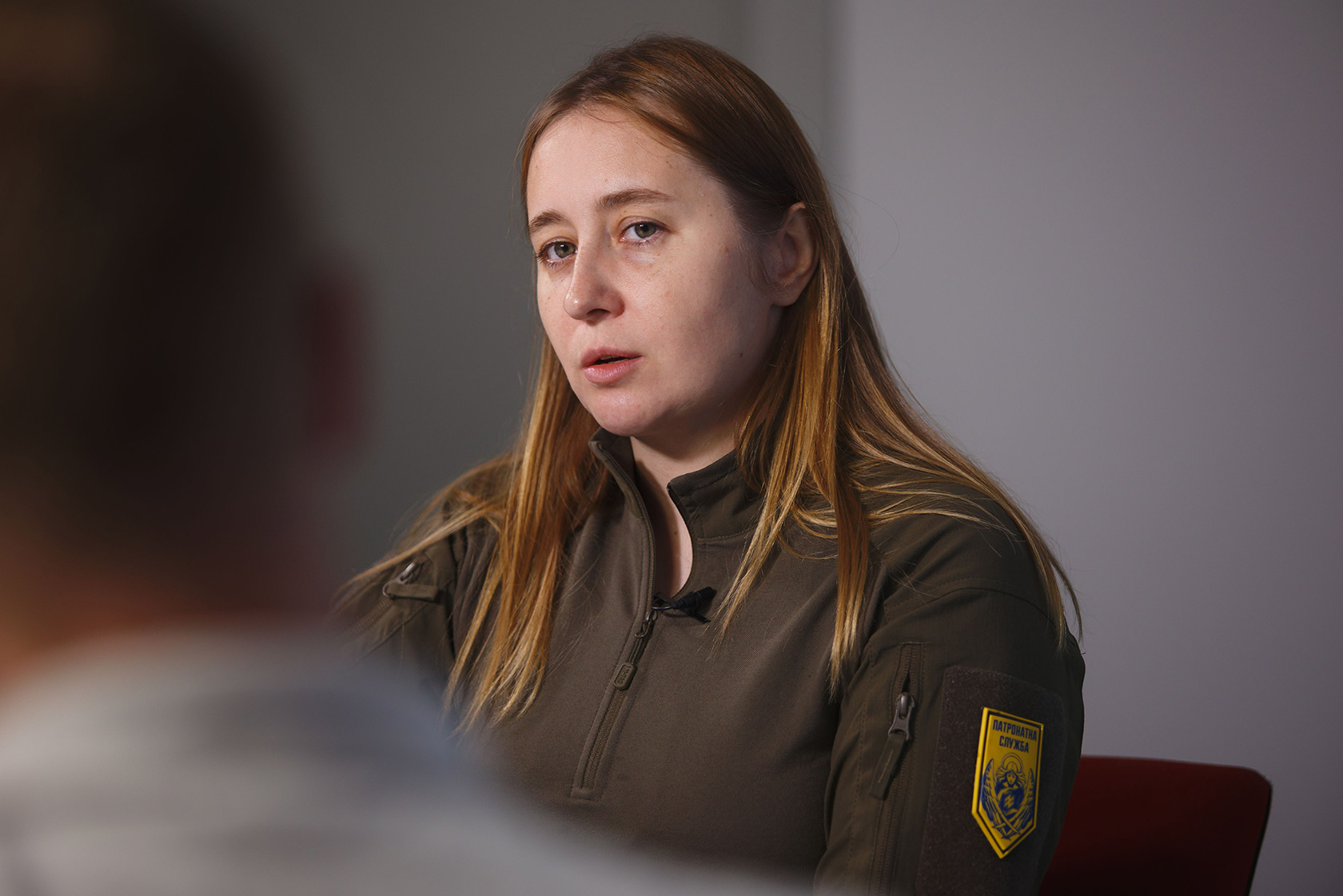
– Exchanges are done right on the frontline?
– Yes, because the enemy will not come to our territory, and we will not go to the territory they currently control.
No one, for example, will let us into the Azovstal plant to look for our guys.
– Do you take part in communications with Russians regarding the exchange of bodies?
– No. This is done only on the level of the state.
"Some mothers are not burying their children, but are waiting for the memorial [burial grounds]"
– You have said that sometimes you have to identify people who you are familiar with among the soldiers who were killed. How do you cope emotionally?
– (Pauses) I have been coping for eight years, somehow (exhales). This is very hard.
Sometimes, I compare us with people who work for funeral services, morgues, crematoria - they face death every day. In their case, this is an occupational hazard. They have developed a psychological defence mechanism, and they treat death in a cold-blooded manner, since it’s their job.
We can’t do this. We are like a family, a big family, a large unit in which entire families serve together. And we have been together for so long that every death is a tragedy for us.
I cry every time. I don’t go to all funerals, because I sometimes have to go somewhere urgently and don’t have time, but I try to attend each one.
When they are burying the body, I never just stand there. It is very hard to go through this, hard to look at relatives.
Maybe women are more resilient psychologically. Because our men often cannot bear this. Sometimes commanders have to inform relatives of the death of their loved one.
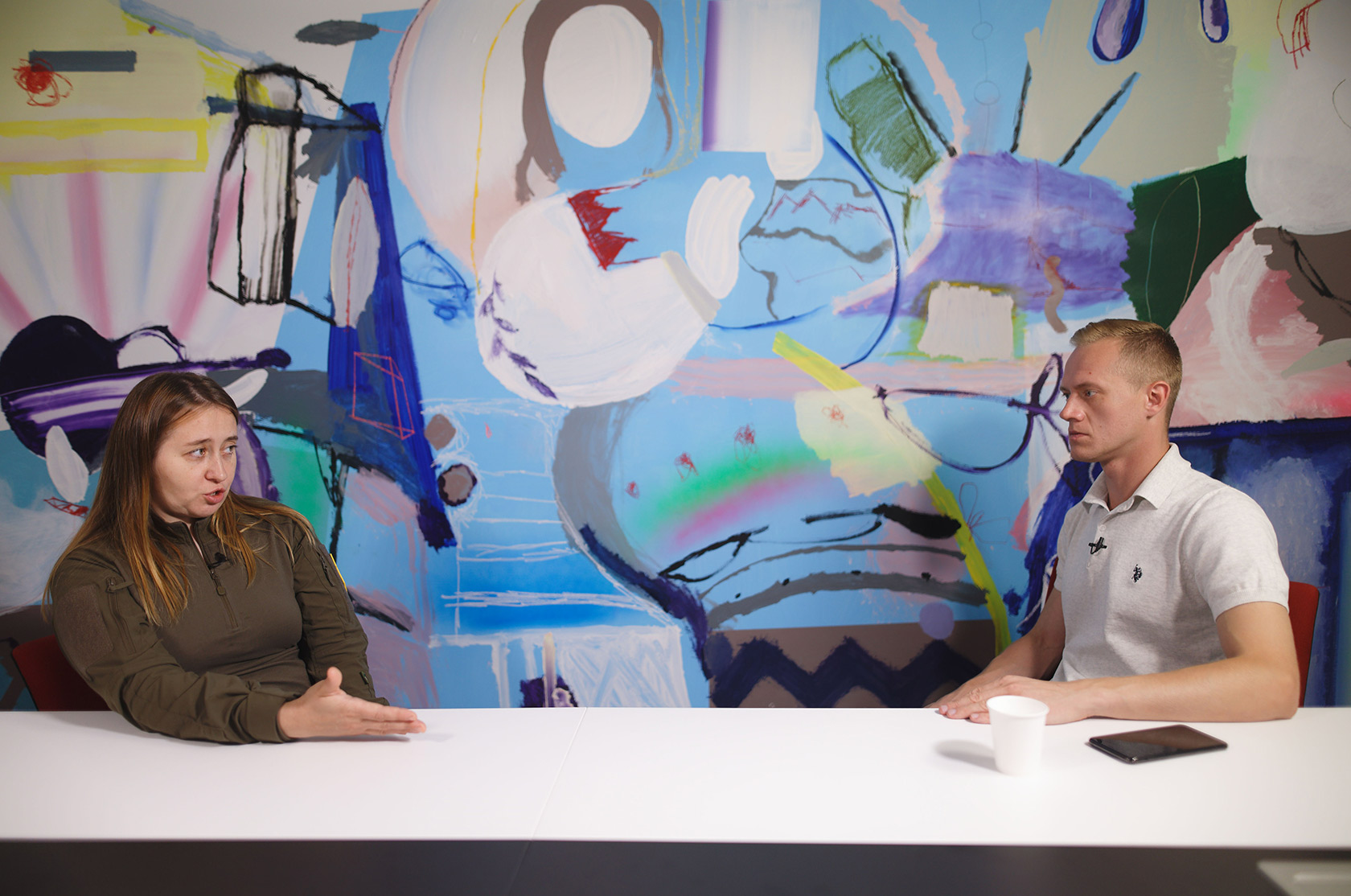
And they take a long time to prepare themselves to do so. They are always under stress on the battlefield, and now they have to call relatives. This is very hard; you cannot just inform them in cold blood and hang up. You have to find a way to connect with a person, and, of course, there are no words that will not upset the person, this is nonsense.
So you choose the right words each time, listen to the other person’s voice over the phone to decide how to put it correctly, in order not to lose contact. Because after this, they have to go through procedures, identification, meeting the relatives, accompanying them, helping them with documents, and communicating with them.
We have never lost touch with any relatives. We’ve always had a woman on our team who leads the group chat with all the deceased soldiers’ mothers. The Azov Regiment holds a Remembrance Day every year. We have always invited all mothers. We try to support everyone.
If there is any problem, we are always there, on the phone. Now, the situation has changed a bit due to the large number of deceased soldiers, so unfortunately, we do not have time to communicate constantly. For example, of the soldiers killed in Mariupol, at Azovstal, we have managed to recover almost 600…
We have nevertheless set up a group chat for relatives to talk to each other or ask questions. We have an information channel. – From Mariupol specifically?
– From both Mariupol and Azovstal, we do not distinguish between them. We have managed to identify and bury only approximately 30 people so far from the Azov Regiment specifically.
And then we have another problem - at the moment, we do not have a place to bury them in Kyiv.
– You got ahead of my question: what problems are you encountering and who might disrupt your work?
— Actually, nobody interferes with it.
Everyone is united to solve this problem. Many parents, not only of the members of Azov but of all the defenders of Mariupol, want their sons to be buried together, and for the site to be a good, worthy memorial.
Our idea is that the memorial grounds should be on the banks of the Dnipro River, in a place that will be visible from all sides of Kyiv. Our soldiers are worthy of such glory, and this will be a sign to future generations that they should not forget at what cost they won their freedom and a peaceful life.
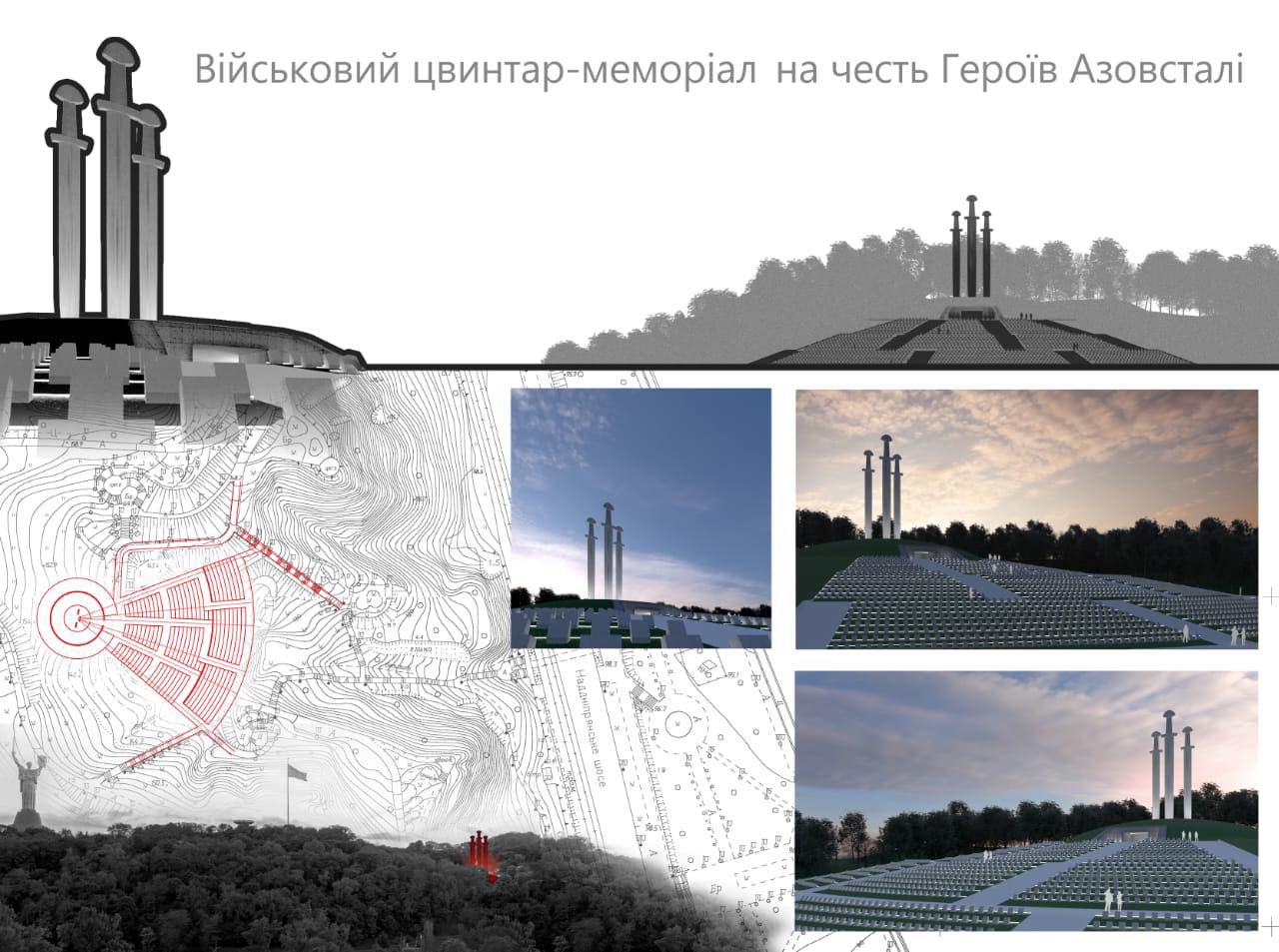
— Have you already chosen a place?
— Yes, it will be on the site of the Spivoche pole [a venue for concert performances in the Pechersk Landscape Park in Kyiv -ed.]. There is already a memorial to the soldiers of the Second World War and the national flag there, and the spot is very well suited to accommodate all architectural and visual standards.
Our architect (by the way, also an Azov member) designed the visual concept. Currently, it is in the hands of the Kyiv City State Administration and, as far as I know, Mayor Vitalii Klychko has already seen it.
At the moment, there are a number of bureaucratic procedures that are completely inappropriate now. However, the authorities are trying to find a solution as soon as possible, because this cannot be postponed.
Currently, the urns with cremated remains are being stored in a crematorium. Some families took the urns home, but this is not very appropriate. The memorial should be created as soon as possible.
— When might the memorial appear?
— We would like to finish everything before winter. The architectural form that we would like to see is quite large-scale and complex. Therefore, you first need to start the burial process, then build the memorial complex itself and put the burial place in order.
After that, paths will be laid out, greenery will be planted, and stairs leading directly from the Dnipro embankment need to be rebuilt.
The location is very good, and the only thing we are waiting for is a green light from the authorities.
We have another big problem, though: there are mothers who do not want to cremate the bodies for religious reasons, and said they will wait for the memorial site to be ready in order to bury the fallen soldiers together. Parents are waiting to bury their children.
The bodies are still stored in the morgues’ refrigerators. We are now appealing to President Zelenskyy to help us urgently begin the process of burying the fallen Ukrainian heroes on the site we have chosen for the memorial.
"The Russians are not transferring to us the bodies of those killed in the Olenivka Penal Colony"
— You mentioned Azovstal. How did the withdrawal of Ukrainian troops from Azovstal actually take place? Could you please tell us the story?
— Actually, it was a special operation and a stalemate. Our commander, Denys "Redis" Prokopenko, had to decide on behalf of the soldiers who were unable to speak for themselves, because they were wounded and unconscious.
I know what our soldiers are capable of: they would have fought to the last and broken through. However, there was a huge problem: there were wounded soldiers and women with them. The order of the Supreme Command was to draw a part of Russian Forces to the site and thus to hold Mariupol as long as possible in order to give our troops the opportunity to defend the main strategic areas: Kyiv and Chernihiv.
The task was accomplished: they had fought and lasted much longer than we expected.
— Do you have information on how many wounded there were?
— We had previously tried to negotiate the evacuation of the gravely wounded during the first evacuation, an estimated 50 people. However, there were in fact many more than that. I think the total has been estimated at 500 people.
We simply did not consider those who were conscious and could walk on their own two legs as wounded. In fact, everyone there was injured and had suffered concussion. We had a few guys that were let go, they were amputees even before the full-scale war. However, these folks still wanted to serve
They were released along with the seriously wounded. When we examined them, no fresh wounds were found, but they were all contused.
Concussion doesn’t affect the brain alone. All internal organs can suffer contusions under such terrible bombardments as we saw at Azovstal, when our soldiers were suffering from morning to night from five-tonne bombs.
At first sight, everything seems to be fine, but when an ultrasound is done of the heart, we see that there are changes from the blast wave, from a strong shock, and the heart muscle can be damaged.
I am not going to explain the anatomy of the heart, but this is a very serious form of injury. All the guys who remained in captivity have had contusions.
Brain concussion can lead to irreversible changes, including mental consequences.
It is important for us to free our soldiers who are being held in captivity as soon as possible and, to be honest, we don't know who to turn to anymore. We were so disappointed by the Red Cross and all those international organisations...
It turned out that they simply no longer had any influence. Basically, they do not have sufficient authority. This entire world order no longer works.

— Do you know where the Azovstal defenders are now?
- We can only go by the information that we see in the online communities of these b*astards [Russians]. Some of the POWs are still in Olenivka [the penal colony there], and others are in Donetsk.
We are getting at least some information from Russian Telegram channels. The Red Cross is not fulfilling its obligations. There were conditions agreed that the POWs should be able to contact their relatives twice a week.
The Red Cross should have monitored this. However, even this escaped from under their control.
— What about the Olenivka tragedy? Perhaps you know why some of the POWs were transferred there?
— No. I can only say that in the opinion of the people in our circles, it was an execution. It was revenge. During the battle for Mariupol, our soldiers destroyed many Russian troops and members of the high command.
— Were there only Azov members in Olenivka?
— Yes, that barrack in Olenivka held only Azov members.
Russian propaganda has been talking about the Azov Regiment on television for the past eight years: they say "these are Nazis", "this is Satan himself", and "this is evil".
And then suddenly they let some of the Azov fighters go, even though they were severely wounded.
And after all these years of propaganda, the citizens of Russia or of Russian-controlled DPR (Donetsk People’s Republic) don’t get it: "I mean, how can it be? We were deceived, it's treason." And this is not at all good for Putin.
— Do you have any lists of those killed in Olenivka?
— The problem lies in the fact that we only have those lists of the dead that were posted on the website of the Ministry of Defence of Russia.
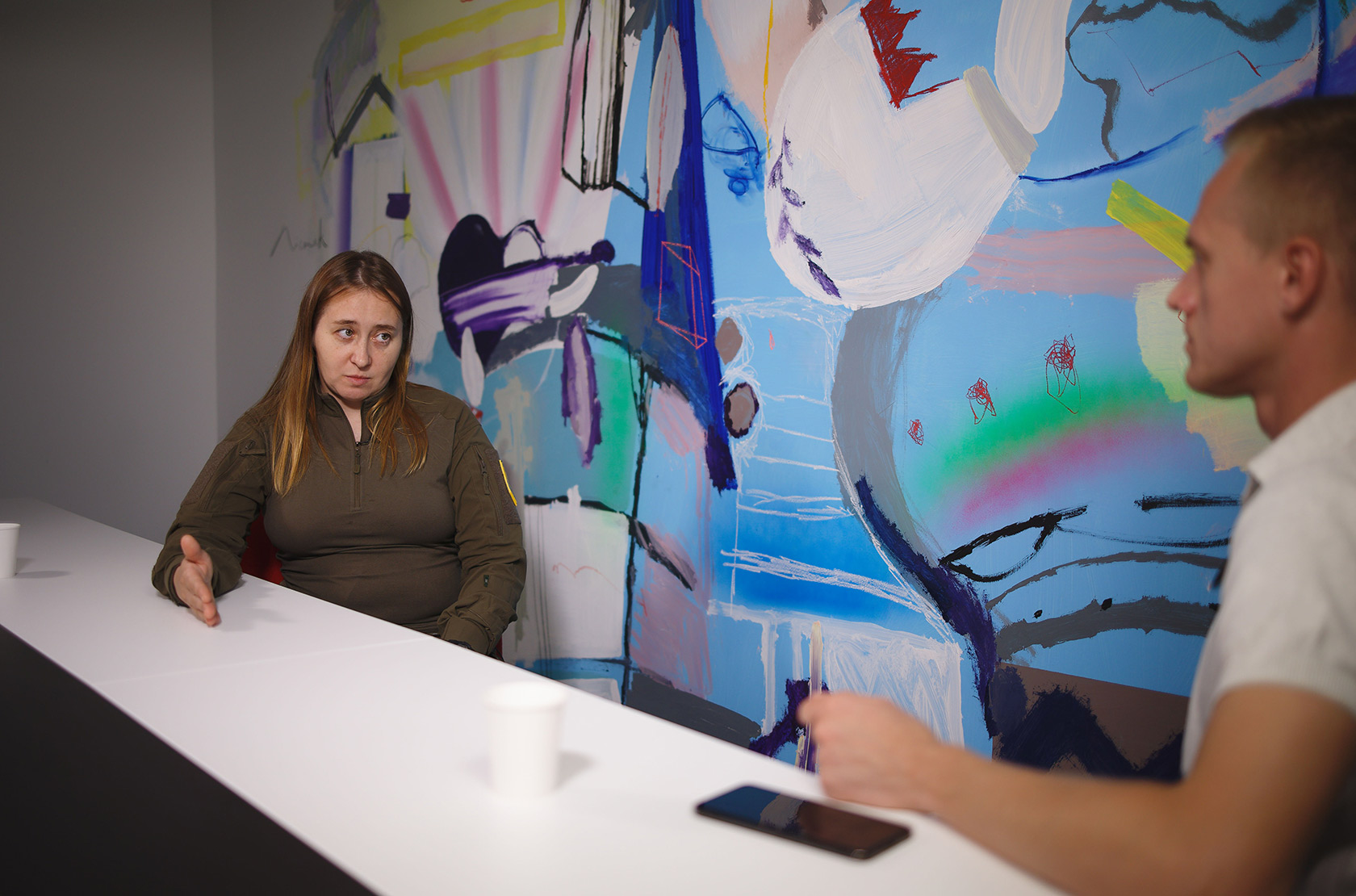
— Did they hand over the bodies?
— No. We cannot verify these lists, because it is legally impossible. Even from a moral point of view, it is impossible, as there is no trust in Russia’s claims - they could put anybody on this list, even Pushkin, Tolstoy or whoever they could imagine, and announce: "These are the dead, these are the wounded, these are the living."
— Were there no Red Cross representatives in Olenivka either?
— The IRC wrote a letter to the Russian authorities requesting that they be allowed to enter the Olenivka penal colony to see what had happened there. Of course, nobody allowed them in.
And, as I understand it, the IRC is not particularly eager, most likely because they were told: "Folks, I'm sorry, but you won't get in there."
I repeat, everything there looks like there was an execution. You see, there were strange coincidences - the day before, 200 or so Azov members were transferred to a particular barrack, which exploded the next day.
Based on the videos that the Russians posted on the internet and as analysed by explosives specialists, there was definitely an explosion inside. The Russians were using thermobaric weapons, and the POWs died in the fire.
— Did they deliberately burn the bodies?
—Most likely, the Russians shot thermobaric projectiles that caused a fire. They published videos afterwards, showing burnt bodies.
How can we identify a person? It simply cannot be done. However, the use of certain types of weapons can be confirmed by forensic medical examination. Such an examination can determine whether they used any prohibited weapons. Therefore, most likely, the reason they do not give the bodies of those killed.
I am not sure whether they will ever hand over the bodies, or whether they will be kept until the end, until they decompose to the extent that nothing can be identified. What the Russians are doing, In fact, is covering up their crimes.

— A final question about Azovstal: how many of our soldiers left the steelworks?
— The estimate is a total of 2,000, of whom more than 900 people are Azov members.
Civilians and a lot of women still remained there at the time. According to our agreements, the women were supposed to leave just after the exchange of the severely wounded.
We had two pregnant women there, one was a member of Azov, the other was either a border guard or a marine - I don't know for sure. The one who was not an Azov member is about to give birth. The Azov member is in the fourth month of her pregnancy.
— Are the Russians holding these pregnant women in captivity?
— That’s right. They cannot even bring themselves to free two pregnant women. Not to mention the others: they continue to hold up to 50 women!
However, I do not understand why the international community is so incompetent that it cannot prevail on the Russians in any way!
The entire world order that developed after the Second World War, the Geneva Conventions and so on – none of it works.
"We are fighting now, so that later our children do not fight against the children of Russian b*stards"
— Finally, I would like to talk about you personally. What did you do before 2014?
— I was in business. I have two university degrees. I graduated from Taras Shevchenko University, from the Faculty of Mechanics and Mathematics, and then graduated from the Faculty of Law.
When I was studying, I worked as a legal consultant at a private security organisation. Then I held the position of a financial director there until the Revolution of Dignity [in 2014].
At the same time, I had a small business organising events and holidays. We used to organise weddings and all kinds of holidays (smiles as she talks).
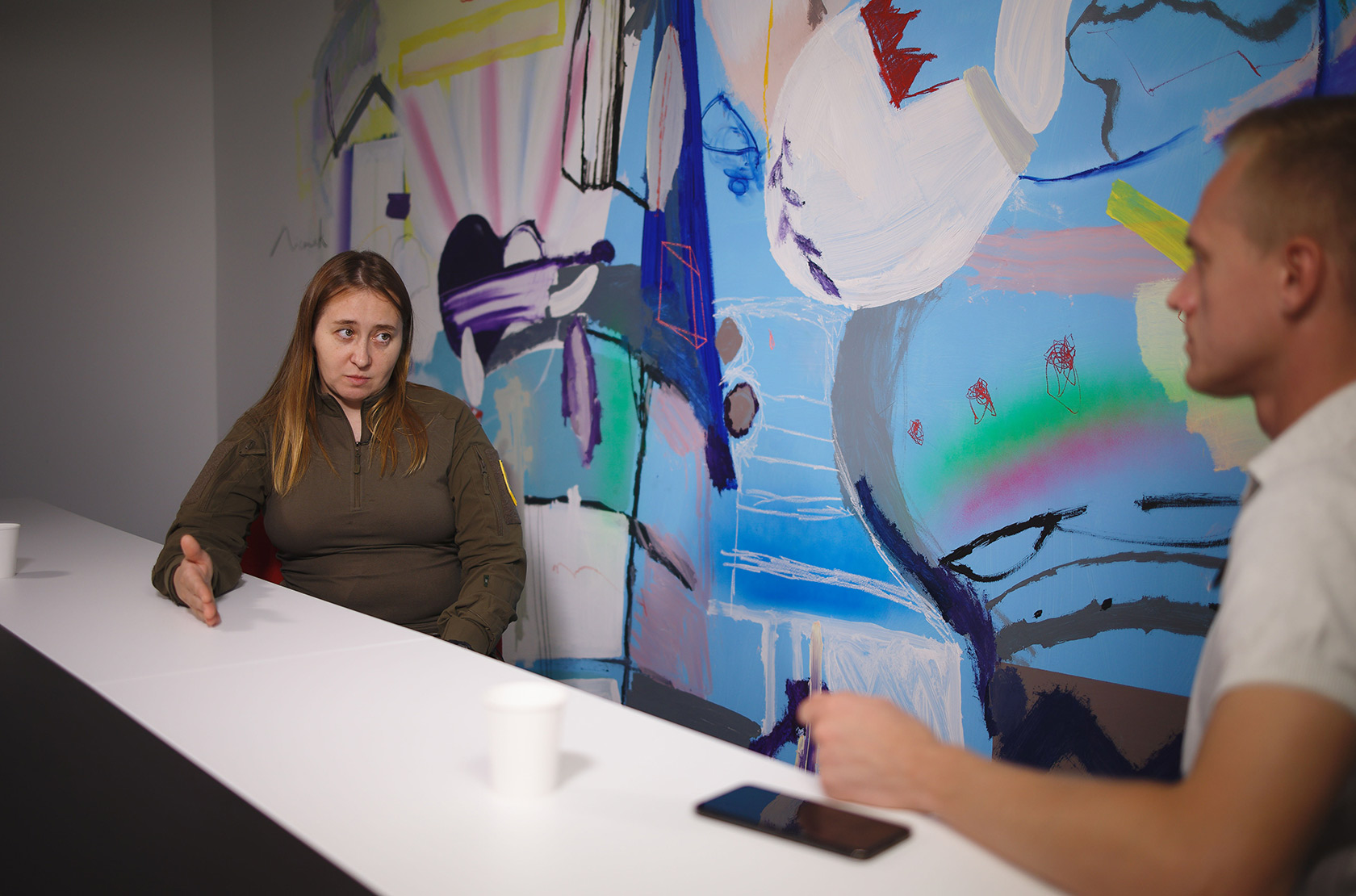
— You had big changes in your life!
— Yes, that's where the pendulum swung (laughs as she talks).
— You used to have a quiet, peaceful life. Now your work is associated with death and negativity. Why are you doing this?
— I don't know (pauses). I just have the feeling that I am obligated to do it. No one is forcing me, but I just can't live any other way.
It is not all negativity. I live in a large Azov family, where everyone supports each other.
It gives me the strength and inspiration to work. We are fighting now, so that later our children do not fight against the children of Russian b*stards.
Roman Kravets – Ukrainska Pravda